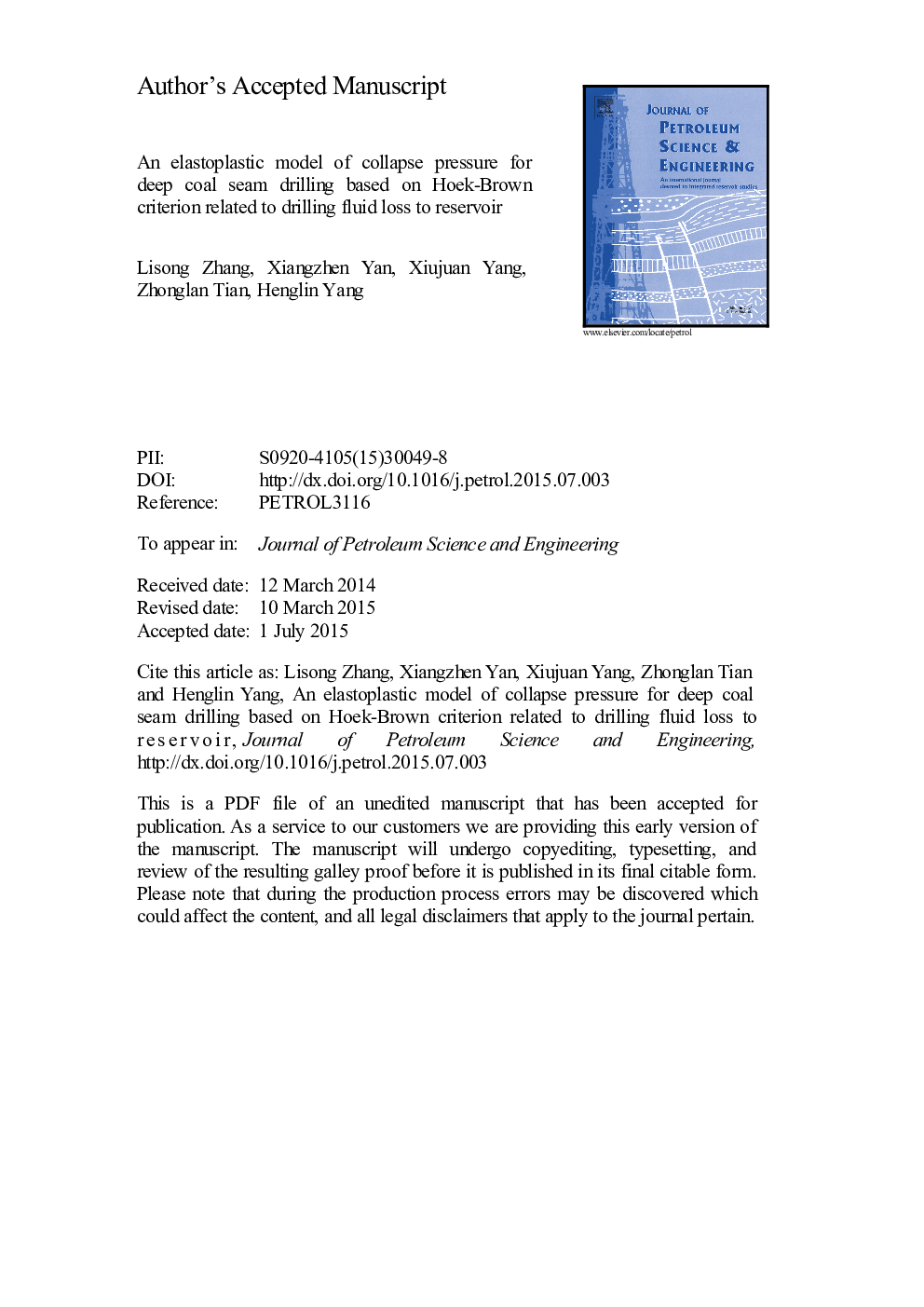| Article ID | Journal | Published Year | Pages | File Type |
|---|---|---|---|---|
| 1754681 | Journal of Petroleum Science and Engineering | 2015 | 32 Pages |
Abstract
Too high borehole pressure can lead to the drilling fluid loss to the coalbed methane (CBM) reservoir, and then cause reservoir damage. In CBM rich regions of China, the drilling fluid loss caused by higher borehole pressure is a particularly prominent problem because the target coal seam is deep and soft. Therefore, selecting an appropriate drilling fluid density or borehole pressure is the most effective way to both avoid drilling fluid loss and maintain wellbore stability in these regions, which means that the collapse pressure must be calculated accurately enough. In this paper, the elasto-plastic characteristic of the deep coal seam under high confining pressures at X region in Qinshui basin is determined based on the conventional triaxial compression test, and the mechanical parameters related to solve the collapse pressure are obtained. Then, selecting the Hoek-Brown strength criterion as the limit equilibrium condition, an elasto-plastic model of collapse pressure for deep coal seam drilling is derived to relieve the problem of drilling fluid loss to formation, considering the radius of plastic zone, the geological strength index (GSI), the non-uniform in-situ stress coefficient and the unconfined compression strength of the intact rock. Taking CBM X-X1 well in X region as an example, the elasto-plastic results of the collapse pressure are calculated and compared with elastic results, and the relations between the collapse pressure and the influence factors are analyzed. The results show that the elasto-plastic results of the collapse pressure decrease by 6.64 % than the elastic results calculated by Hoek-Brown criterion when the radius of plastic zone is 1.5 times of borehole radius; the elasto-plastic results of the collapse pressure decrease with the increasing of the radius of plastic zone and the non-uniform stress coefficient; the collapse pressure presents the variation trend of the minus power function as the GSI increasing.
Related Topics
Physical Sciences and Engineering
Earth and Planetary Sciences
Economic Geology
Authors
Lisong Zhang, Xiangzhen Yan, Xiujuan Yang, Zhonglan Tian, Henglin Yang,
